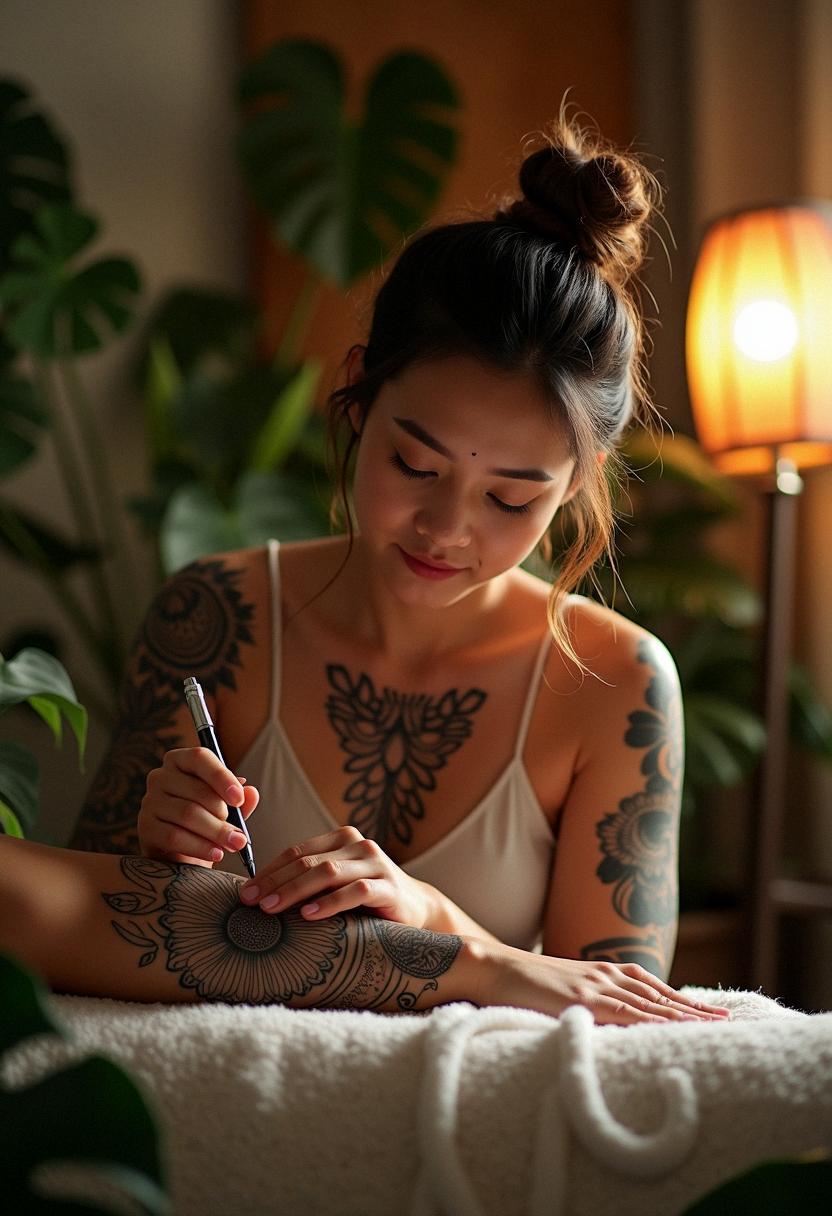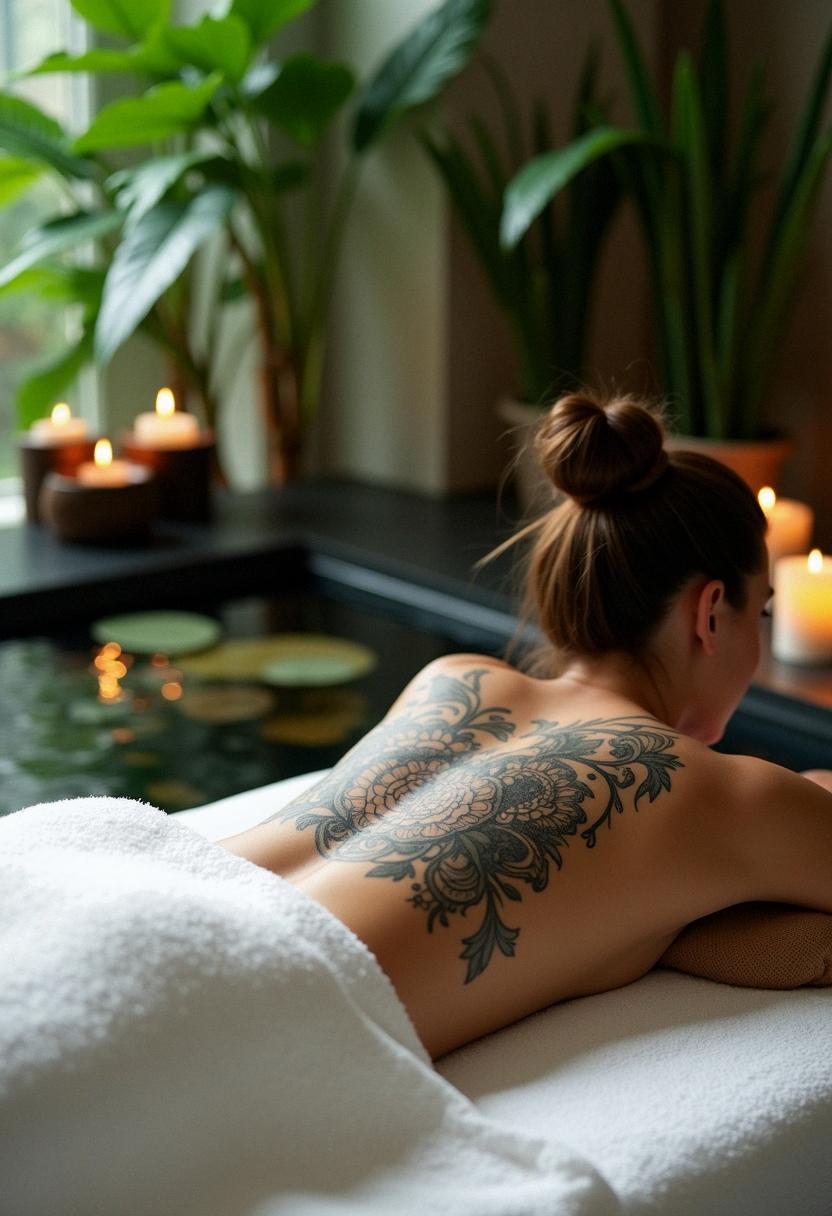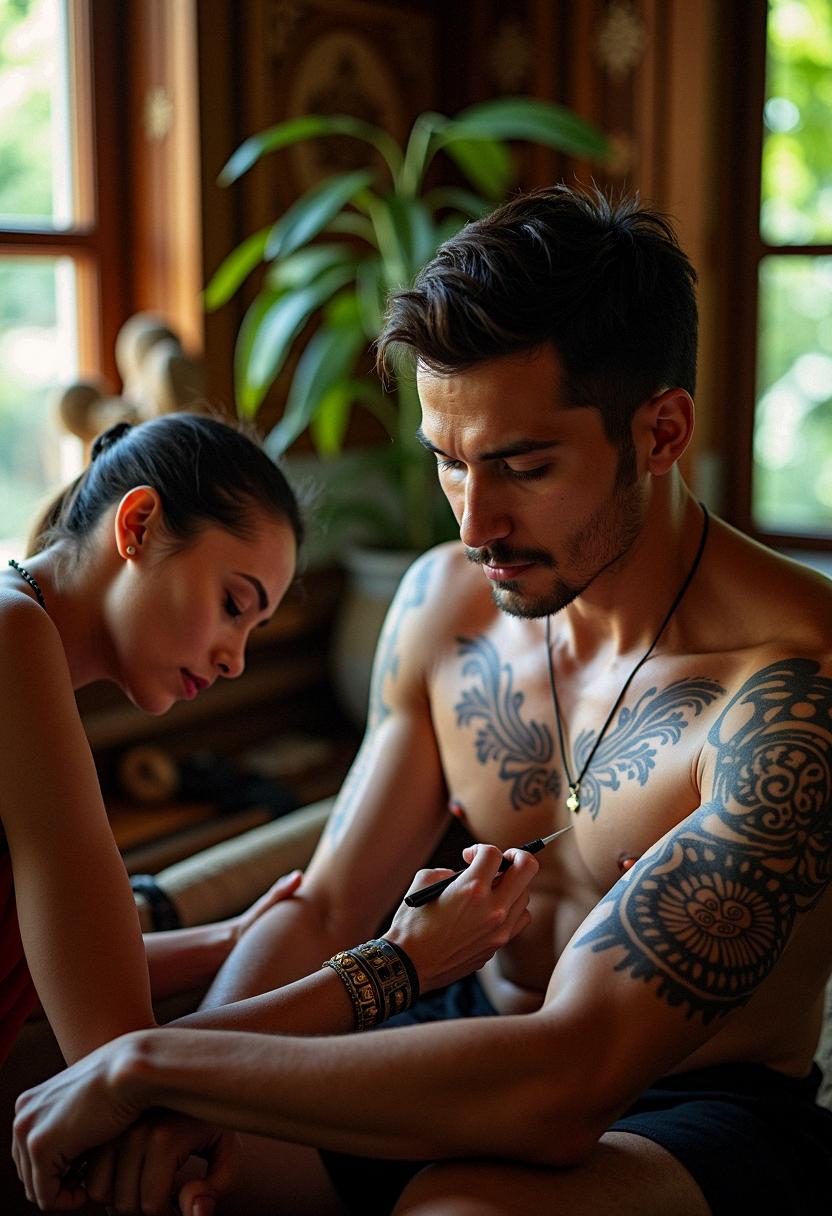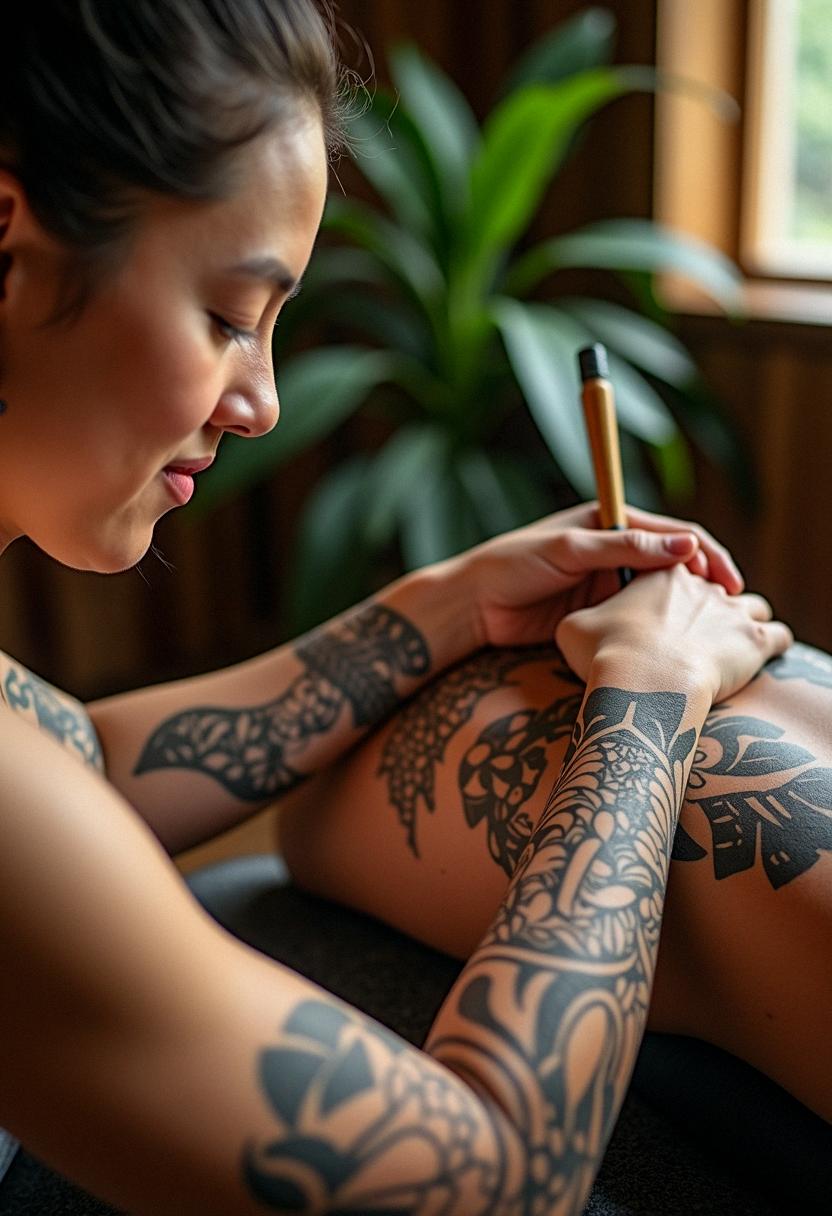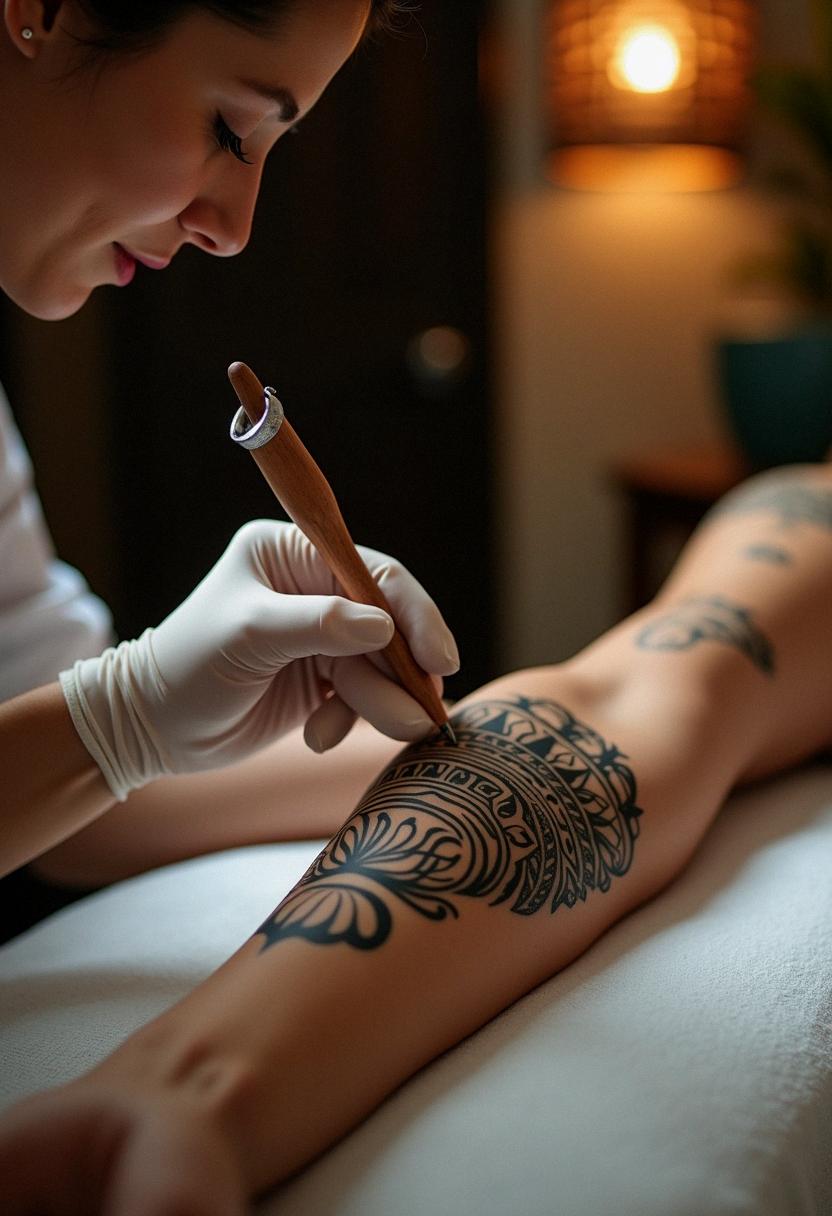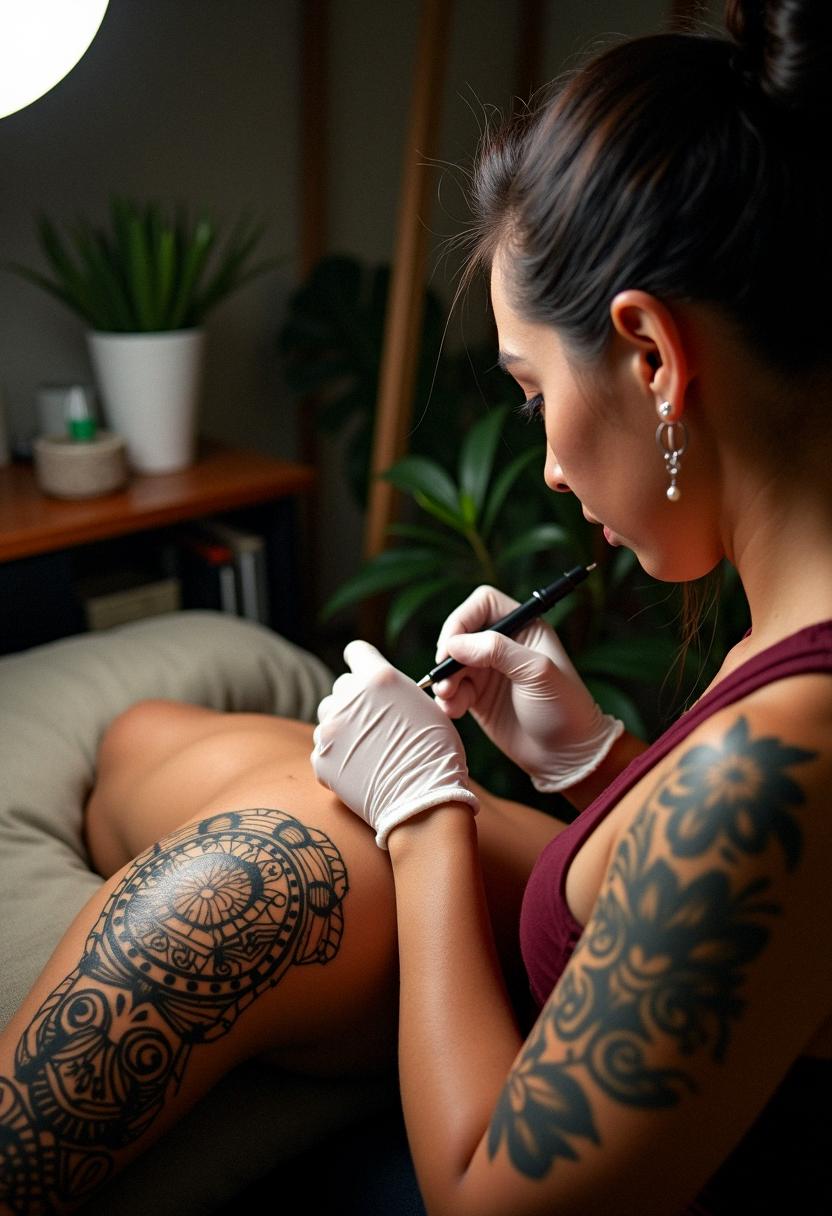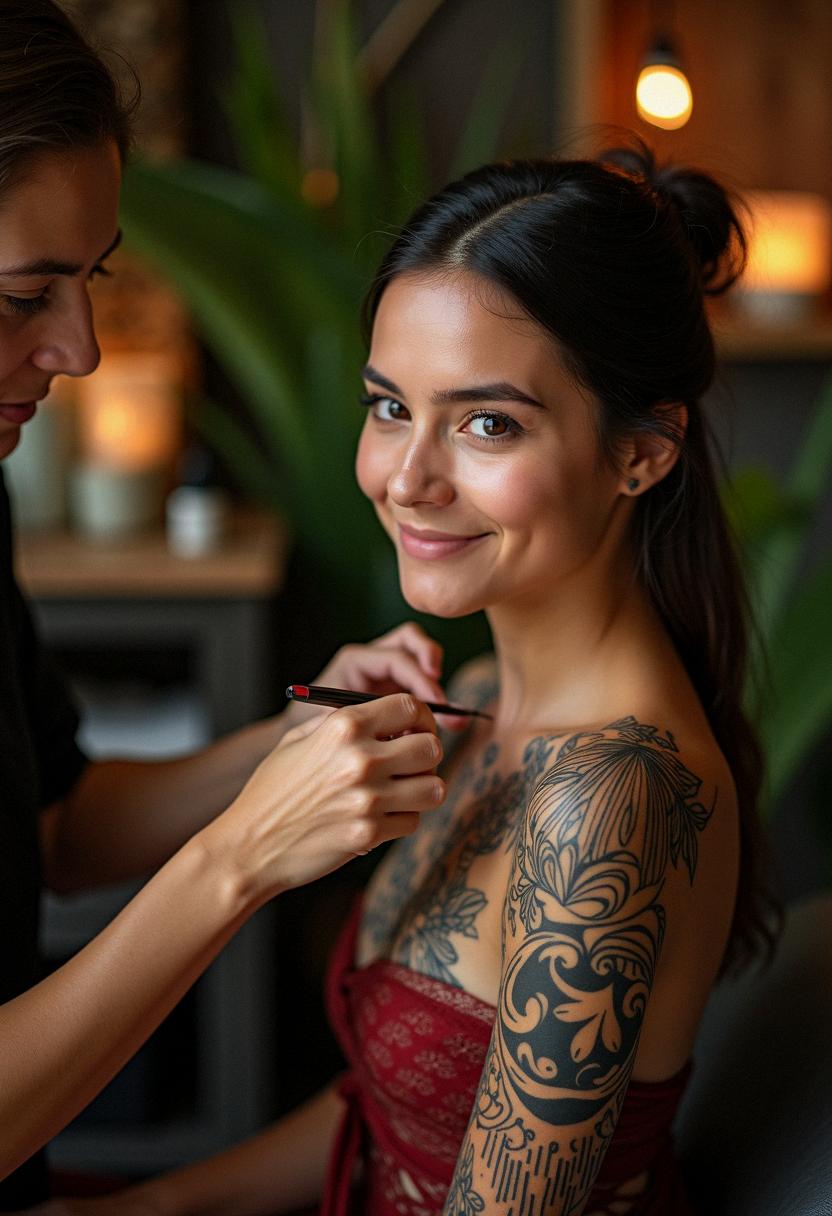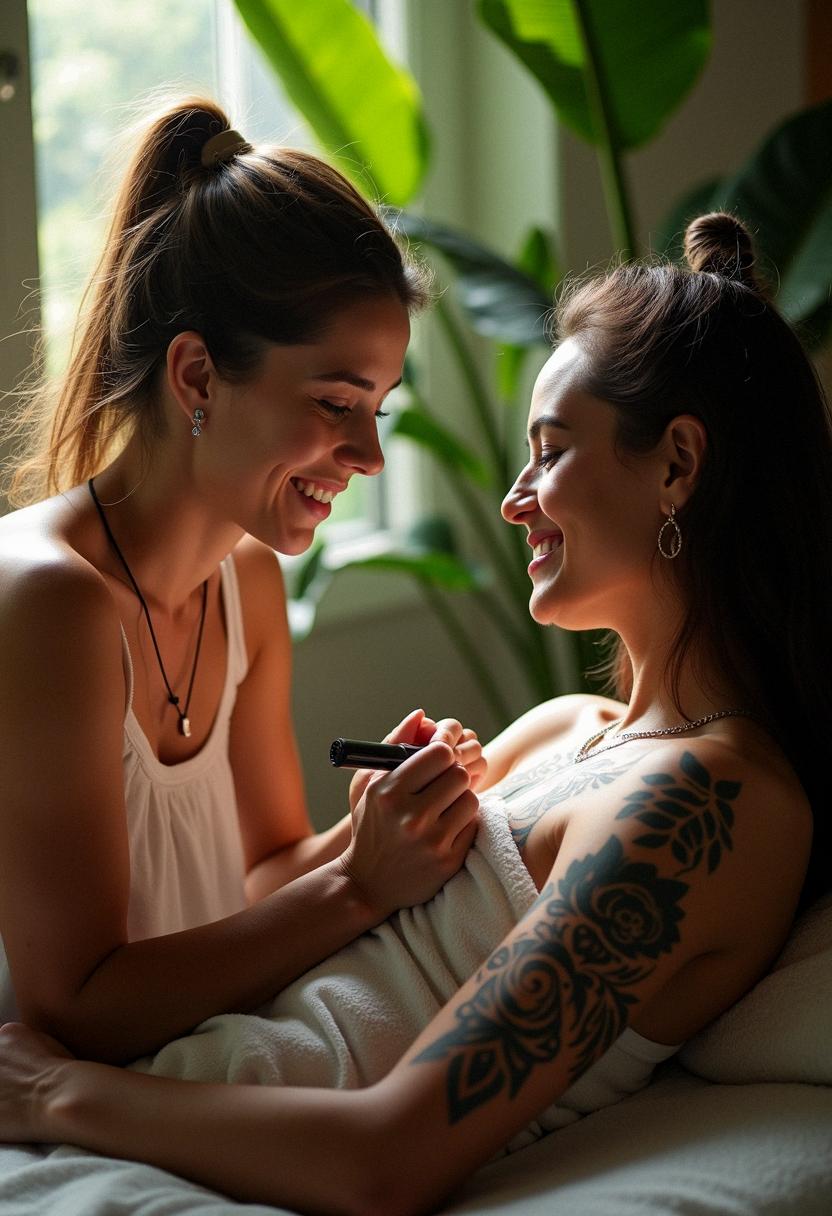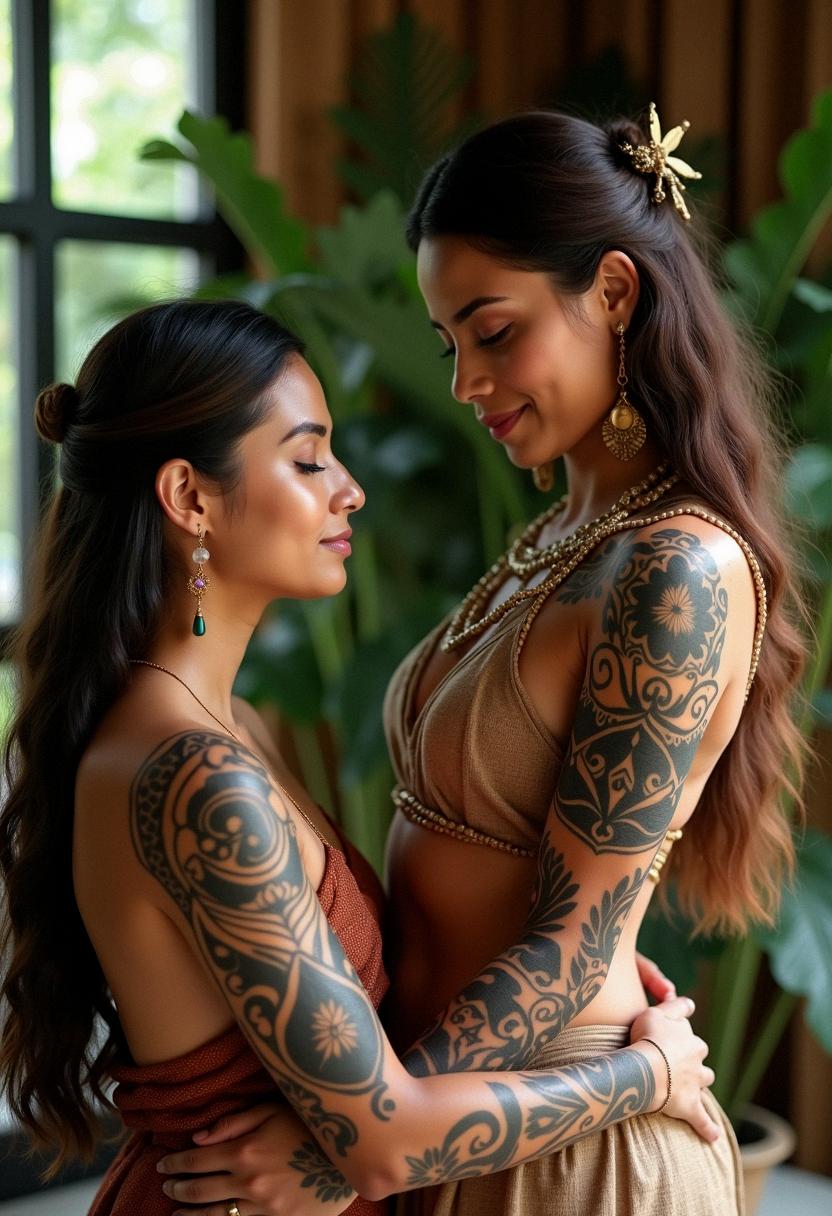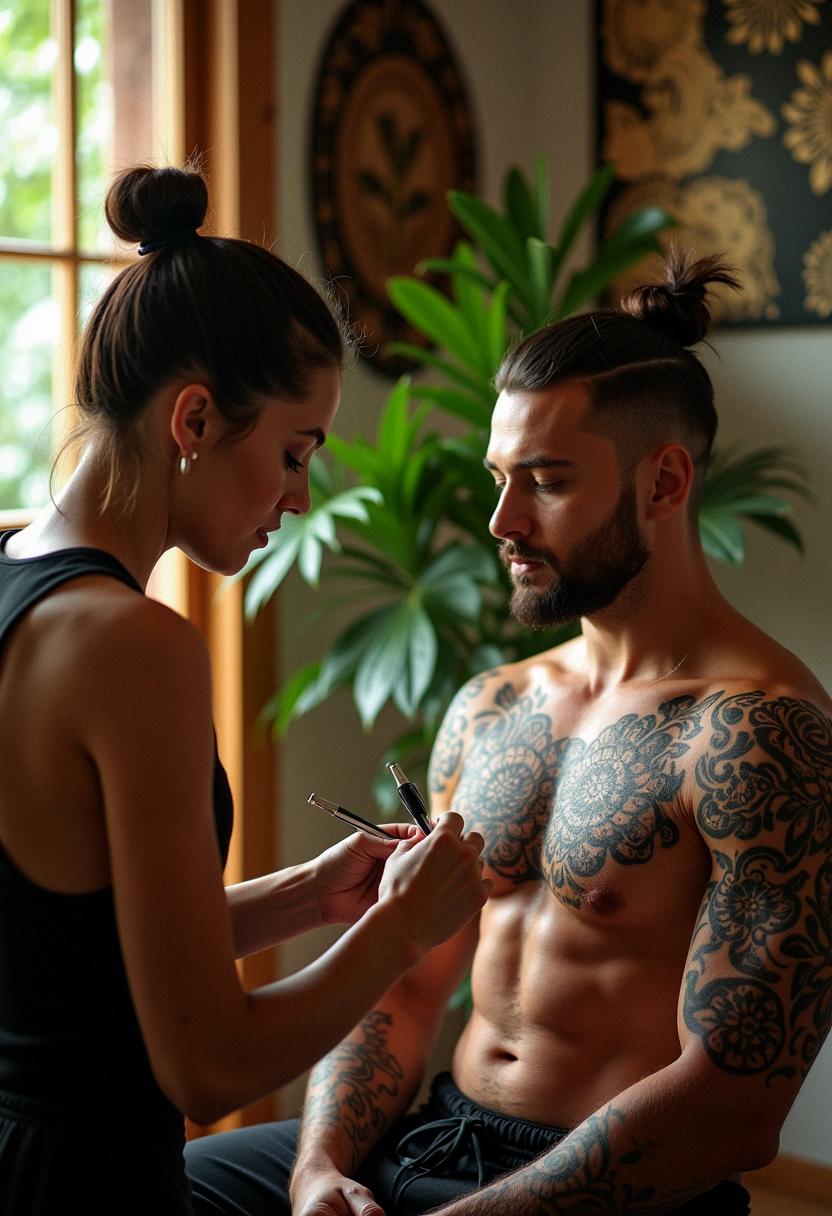Polynesian tattoo traditions are more than just striking visual designs; they are a rich and intricate art form deeply interwoven with cultural identity, spirituality, and ancestral heritage. When you explore the world of Polynesian tattoos, you immediately realize that every single mark tells a story that has been passed down through generations. I find this art form incredibly captivating because it transforms the act of inking into a meaningful conversation with one’s roots. The artistry isn’t merely about aesthetics – it’s about embracing traditions and the deep-seated philosophies of life, honor, and nature. Each curve, line, and swirl is carefully crafted to represent bravery, social status, family lineage, or even personal milestones. I remember hearing fascinating stories of o-mens who would endure harsh initiations as the ink was permanently etched into their skin, each design systematized to embody essential virtues and experiences unique to those who wear them. Whether you’re an enthusiast of tattoo history or simply someone who appreciates art with a soul, getting to know Polynesian tattoo traditions opens up an endless dialogue with the past, inviting you to reflect on your own unique narrative and connection to the wider world of art and spiritual symbolism.
Deep Dive into the History and Origins of Polynesian Ink
The history and origins of Polynesian ink are as elaborate and layered as the designs themselves, steeped in ancient traditions that have evolved over centuries. When you dig deep into the lore behind these tattoos, you learn that they were originally a rite of passage, a sacred ritual marking transitions in status, gender, and community. I’ve always been fascinated by how these designs were initially reserved for community leaders, warriors, and people of significant standing. The process of tattooing was as much about personal and spiritual growth as it was about aesthetics; every line was a symbol of courage, honor, and the complex hierarchy that structured ancient Polynesian societies. Imagine the precision and care that went into each stick and ink application, with the whole practice often interwoven with chants, dances, and communal celebrations that bonded individuals to their ancestors’ legacy. These ancient methods blended technique with heartfelt symbolism. The artistry has journeyed from sacred tribal rituals to modern tattoo parlors worldwide, where each piece continues to evoke a sense of mystery and respect for ancient practices. I find the evolution from ritualistic ceremonies to contemporary expressions of art inspiring, as it reminds us how powerful cultural symbols can be when they are preserved and adapted over time.
Understanding Iconography and Symbolism
Diving into the iconography and symbolism of Polynesian tattoos is like unlocking the secrets of a visual language that narrates tales of bravery, spiritual journeys, and deep personal meaning. I love how these tattoos are not random doodles but rather intricate emblems carefully selected to represent essential elements of Polynesian life. Each symbol, be it the turtle symbolizing endurance and navigation, the shark for protection and strength, or the intricate geometrical patterns representing natural elements, carries a powerful narrative that echoes through the ages. The more I studied these markings, the more I realized that every design holds a puzzle piece of the culture’s rich heritage—a coded message addressed not only to the bearer but also to the community and the ancestors. The deliberate placement of these symbols on the body reinforces their role as a visual statement of identity and pride. When you trace the history behind these elements, you find a fascinating interplay between art and mythology, where each pattern is a metaphor, blending spirituality and practicality into an unforgettable work of art. This symbolic language is akin to a carefully composed symphony, where every note contributes to the story of unity, resilience, and the deep connection to nature and spirit.
Exploring Popular Polynesian Tattoo Design Styles
Polynesian tattoo design styles are diverse and varied, each offering a unique glimpse into the cultural and artistic traditions of the islands. I often find myself captivated by how these designs combine bold lines, intricate patterns, and curves that flow naturally across the skin, almost mimicking the waves of the ocean. The traditional styles, such as the Marquesan, Samoan, and Tahitian tattoos, all bring something distinct to the table, whether it’s the emphasis on symmetrical patterns, the use of repetitive motifs, or the focus on storytelling through symbolism. In one style, the swirling designs might represent the turbulent forces of nature, while in another, the geometric motifs tell stories of familial bonds and social status. I love how each design is tailor-made, deeply personal while also serving as a testament to a shared cultural identity. This art form isn’t just about decoration—it’s a medium for expression, resilience, and survival. Even today, excellent tattoo artists are pushing the boundaries by blending traditional techniques with modern elements, ensuring that the rich history of Polynesian art continues to inspire and evolve while retaining its soulful roots.
Traditional Techniques and Modern Adaptations
The blend of traditional techniques with modern adaptations in Polynesian tattooing creates a compelling fusion that bridges generations. Traditional tattooing was often executed using handmade tools, natural pigments, and an intense emphasis on the spirituality and communal rituals that accompanied the process. I am continually amazed at the profound respect for heritage that remains evident even as tattoo artists increasingly incorporate modern technology and contemporary safety practices into their work. Imagine an artist who reverently adheres to ancestral methods while carefully integrating state-of-the-art equipment and hygiene standards to ensure precision and safety without compromising the art’s storied past. This mingling of old and new provides an avenue for artists to innovate while still preserving the sacred meanings embedded in each design. Even as these timeless symbols of strength and identity transition into the modern era, the essence of the Polynesian spirit shines through. Every tattoo tells a tale of evolution—not only of art and technique but also of the need to respect tradition while embracing progress. For me, it’s heartening to witness how culture can be both a living tradition and a flexible canvas that evolves with its medium and the times.
Cultural Significance in Today’s Ink Community
In today’s ink community, Polynesian tattoos hold a revered place that goes far beyond mere body art, as they resonate with deep cultural significance and timeless identity. I often find it intriguing how individuals who choose these tattoos are not just opting for a cool design, but are consciously paying homage to an age-old tradition that encapsulates a universe of myths, legends, and ancestral wisdom. Polynesian tattoos serve as a bridge connecting the wearer with a lineage of art, resilience, and heritage, reminiscent of age-old practices that celebrate the beauty of life’s journey. Many modern enthusiasts seek these tattoos as a way to explore their own personal narratives and as symbols of empowerment that mirror the strength and unity of Polynesian culture. This art form is a commitment—an embrace of a philosophy that champions honor, respect for nature, and a deep appreciation for one’s roots. I appreciate how the contemporary art scene has celebrated this historical significance, leading to a renewed interest in preserving the authenticity of the designs while also adapting them to individual tastes and artistic expressions. The ink is not simply decorative; it is a personal badge of honor that carries the weight of tradition and the promise of connection to something greater than oneself.
Choosing a Skilled Polynesian Tattoo Artist
Finding a skilled Polynesian tattoo artist is a journey of exploration and trust, one that requires devoted research and a keen eye for authenticity and craftsmanship. I always recommend talking to artists who specialize in this niche, as their deep understanding of the history, symbolism, and techniques is crucial to delivering an ink that respects the traditions behind the designs. It’s not just about finding someone who can replicate a pattern; it’s about choosing an artist who imbues every line with passion, heritage, and precision. I’ve heard countless stories where tattoo enthusiasts spent months scrutinizing portfolios and reading customer testimonials before finally making their choice. When you look at an artist’s previous work, you can see the dedication to preserving the culture’s authenticity, all while modernizing elements to fit personal stories and contemporary aesthetics. I advise anyone considering this type of tattoo to engage in a dialogue with the artist, ask about the process, and understand how they integrate traditional techniques with their own creative flair. By doing so, you ensure that your tattoo not only looks striking but also tells a genuine story—a vibrant tapestry that stands as a lasting tribute to ancestral artistry intertwined with modern life.
Caring for Your Polynesian Tattoo: Aftercare Essentials
After your Polynesian tattoo has been permanently etched onto your skin, proper care becomes the utmost priority to ensure that the art remains vibrant and meaningful for years to come. I can’t stress enough how important it is to adopt a responsible aftercare routine, as caring for your tattoo is akin to nurturing a unique piece of heritage that carries emotional significance and deep cultural roots. From keeping the tattoo clean and moisturized to avoiding prolonged exposure to the sun or submerging in water for long periods, every step you take is a gesture of respect both for the art and the traditions behind it. I always say that a tattoo is like a living story on your body—it needs to be maintained because of its personal and historical value. Taking the time to follow aftercare guidelines diligently can preserve the intricate designs and ensure that the healing process is smooth, reducing the risk of infection or fading of those fine details. I’ve seen many instances where a little extra care turned a vibrant piece of art into an everlasting symbol of endurance and cultural pride, and that’s why aftercare is as integral as the tattooing process itself. Each moment of care you invest is a reminder of the deep connection between you and the timeless artistry of the Polynesian tradition.
Common Questions and Myths About Polynesian Tattooing
The realm of Polynesian tattooing is often clouded by questions and myths that spark curiosity and sometimes even confusion. I frequently encounter questions like, “Are Polynesian tattoos only for people of Polynesian descent?” or “Do these tattoos always hold the same meaning for everyone?” The truth is, these tattoos are open to anyone who admires the symbolism and story they represent, even though they carry deep cultural roots that should be respected. Another common myth is that every Polynesian tattoo is identical or follows a strict pattern. In reality, while there are traditional elements and recognizable motifs, each design is uniquely tailored to the individual’s story and status. I’ve also heard folks wonder if modern techniques dilute the authenticity of these tribal markings, but in truth, many skilled artists meticulously blend ancient methods with modern best practices to preserve the spirit while ensuring safety and precision. By debunking these myths and addressing common concerns, we can appreciate that the essence of Polynesian tattooing lies in its ability to evolve and connect people across different cultures. Each question answered enriches our understanding of the craft, strengthening the bridge between ancient traditions and modern expression, and reinforcing the idea that art – in all its forms – is a living dialogue between the ages.
Closing Thoughts on Embracing Polynesian Artistry
Embracing Polynesian artistry isn’t merely about choosing a tattoo; it’s about connecting with a living tradition that celebrates identity, resilience, and the profound beauty of personal heritage. I often reflect on how these iconic tribal designs encapsulate more than just aesthetic appeal—they are a journey into history, spirituality, and the timeless art of storytelling. Every tattoo carries the spirit of the islands, a whispered narrative of ancestors who once explored, conquered, and revered the natural world in ways that we continue to admire today. I find that such art challenges you to think beyond the surface and to appreciate the depth of symbolism hidden in each swirl and line. Whether you’re looking for an emblem that marks a significant phase in your life or simply a piece of art that resonates with your soul, embracing a Polynesian tattoo means celebrating an age-old tradition that has steadily evolved while remaining deeply rooted in its origins. The artistry is enduring, transcending time and trends to stand as a beacon of cultural significance, lifelong storytelling, and an unbreakable bond with the past.


